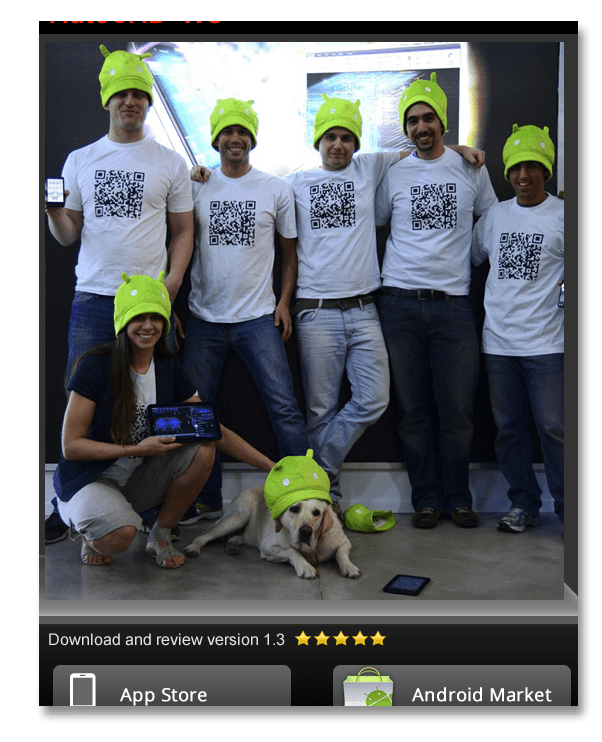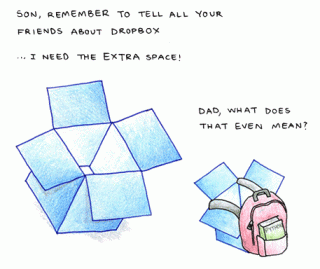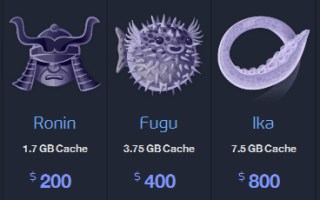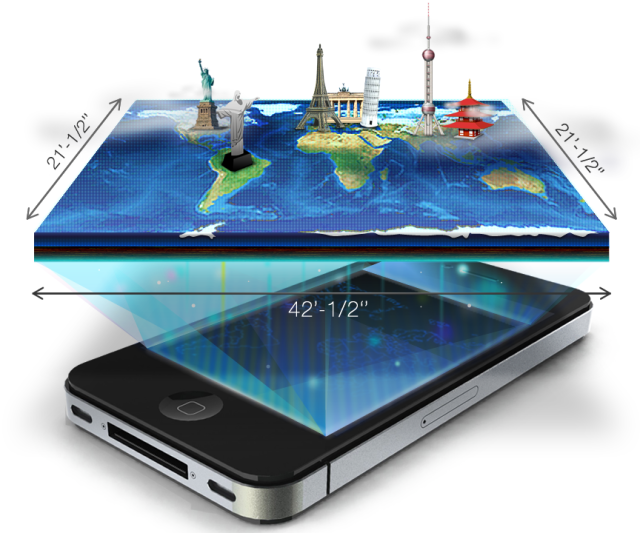Wi-Fi will be getting up to four times more bandwidth with 802.11ac, and gear supporting it will be hitting shelves in just a few months. Here's what you need to know before taking the plunge.
Wi-Fi has become an essential part of our lives. For most of us, it’s second nature to tap into wireless Internet from our homes and offices, and we’re all too familiar with the “where can I get free Wi-Fi without having to buy something?” dance when out and about. For both traditional notebook computers and mobile devices like phones, gaming devices, and and tablets, Wi-Fi has revolutionized the way we access the Internet. In most homes, it has even replaced the need for wired networks: Why bother with Ethernet, hubs, and complicated cabling when so much can be handled via Wi-Fi? Desktop computers, televisions, game consoles, set-top boxes — heck, even thermostats all routinely rely on Wi-Fi.
These days, most Wi-Fi is 802.11n, technology that started to roll out in 2007 and theoretically offers wireless throughput of up to 300 megabits per second per stream. However, Wi-Fi is about to get an upgrade in the form of 802.11ac, which will not only offer a boost in bandwidth (up to 433 or 867 megabits per second per stream, depending on channel width) but should offer more reliable connections.
Even though the 802.11ac standard isn’t set to be finalized until 2013, 802.11ac gear should start to appear on shelves in the next few months. What are the advantages? Should you jump on board right away, or wait until the technology matures?
Wait — the standard isn’t even done?
The Wi-Fi standards process is a little counter-intuitive. The complete specification for 802.11ac, the next generation of Wi-Fi, isn’t likely to be completely defined until late in 2013. The process is largely controlled by the
Wi-Fi Alliance, a trade consortium that owns the Wi-Fi trademark. However, at this January’s CES trade show in Las Vegas, device makers were already showing off products based on the technology, and the first devices claiming to support 802.11ac will be on same by mid-year.
Something similar happened with 802.11n Wi-Fi. Device makers were eager to jump on the faster Wi-Fi technology, so they began building so-called “draft N” hardware based on draft versions of the 802.11n specification, essentially gambling that the final version of the specification would not be so different that their early products would be incompatible. Draft-N hardware hit the market in 2007, and the Wi-Fi Alliance started certifying devices compatible based on the second draft of the spec. However, the final 802.11n spec wasn’t published until October 2009, by which point 802.11n devices had been on the market for almost two years. Device makers were in a rock and a hard place: Either jump the gun on the spec and risk building hardware incompatible with the final technology, or wait and be locked out of a potentially very lucrative market. After all, everybody wanted faster, more-reliable Wi-Fi.
The same thing is happening with 802.11ac. Work on the specification has already been underway for years, and the Initial Technical Specification (draft 0.1!) was published over a year ago. In the last few months, Quantenna, Redpine, and Broadcom have all announced 802.11ac technology targeting everything from base stations to smartphones. Even though the standard likely won’t be finalized until the end of 2013, device makers are already rushing to get their 802.11ac to market — they don’t want to be left behind.
What is 802.11ac?
802.11ac Wi-Fi promises to be an improvement on the same scale as the transition from 802.11g to today’s nearly ubiquitous 802.11n Wi-Fi. In very loose terms, 802.11ac should offer about four times the bandwidth of todays’ 802.11n Wi-Fi. That means faster downloads, and that could translate directly to better use of battery power, since devices’ Wi-Fi radios will be able to process more data in less time.
Folks who have embraced 802.11n Wi-Fi won’t have to throw anything away: 802.11ac is backward compatible with 802.11n. Those relying on 802.11n won’t see any improvements, but bringing 802.11ac devices or base stations into the mix won’t be disruptive.
Looking a little bit deeper, 802.11ac Wi-Fi offers some major improvements over 802.11n that will help networks support a larger number of high-bandwidth devices as well as make connections more reliable.
Less interference — 802.11n (and all earlier Wi-Fi standards) operate in the unlicensed 2.4GHz frequency band, which is famously shared by everything from cordless phones to Bluetooth devices to baby monitors to microwave ovens. Basically, tons of things can interfere with today’s Wi-Fi, and anyone who has tried to get a reliable Wi-Fi connection in a location filled with 2.4GHz devices knows how frustrating that can be. 802.11ac shifts Wi-Fi up to to the 5GHz band, away from common forms of interference. Thus, 802.11ac connections should be more reliable, particularly in homes, offices, and other environments that use other forms of wireless technology. Furthermore, in many cases the 5GHz band offers better penetration of ceilings and walls, enabling better reception in buildings.
Shifting to the 5GHz band doesn’t mean 802.11ac will be magically immune to interference. Some cordless phones and things like WHDI wireless high-def video also run in the 5GHz band, and existing dual-band Wi-Fi solutions are already operating there. (Normally, this is to separate 802.11n traffic from slowpokes running 802.11g or earlier — “pure” 802.11n networks can stay out of the 2.4GHz space entirely.) The 5GHz band is currently much less crowded than the 2.4 Ghz band, meaning 802.11ac will be more reliable than Wi-Fi solutions that have to rely on 2.4 GHz channels.
More speed — Existing 802.11n Wi-Fi has a maximum channel width of 40MHz (actually, two 20MHz channels). 802.11ac can double or even quadruple that to 80MHz or 160MHz per channel, thanks to operating entirely in the 5GHz band. In the 2.4GHz band, a 40MHz channel consumes more than 80 percent of the unlicensed band, which just isn’t practical in many locations. Quite a lot more frequency bandwidth is available up in the 5 GHz band, and 802.11ac leverages it.
A single 80MHz channel running 802.11ac can theoretically handle up to 433Mbps — that’s already faster than a typical 802.11n configuration. However, just like 802.11n, both access points and devices can theoretically pack multiple antennas, giving them more connections and more throughput. As you might expect, a two-antenna system running 80MHz channels offers double the theoretical bandwidth of a one-antenna system, so 867 Mbps. Bump that up to four antennas and you’re up to 1.73Gbps. Eight antennas? In theory, you’re up to 3.47Gbps — but, of course, most people aren’t going to have to devices with eight antennas, each talking communicating with each other exclusively. However, these figures only account for 80MHz channels: If the devices support the optional 160 MHz channels, you can double these theoretical bandwidth figures again. So, a single 160MHz channel running 802.11ac should peak at 867Mbps. That’s in the same category as wired gigabit (1000Base-T) Ethernet. A dual antenna system with 160MHz channels could double that: 1.73 Gbps.
Of course, reality won’t usually be so snappy. Those figures reflect optimum conditions and assume just a single pair of Wi-Fi devices. Reality is rarely so neat. Nonetheless, 802.11ac technology should be a significant improvement over 802.11n in most situations.
Improved stream management — On the geekiest end of the spectrum, 802.11ac also builds on technologies introduced with 802.11n to better manage data streams. Each 802.11ac device (regardless of the number of antennas) will be able to transmit or received independent data streams at the same time. Furthermore, those streams will be separated spatially, rather than by frequency. Spacial stream resolution is kind of science-fictional stuff, and is similar to MIMO technologies in 802.11n: In a nutshell, devices have smart antennas that enable them to determine the approximate locations of devices in an area, and tailor their transmission toward those devices using phased array technologies — so, instead of broadcasting all data to everything in range, devices are able to target their transmissions, significantly improving efficiency and performance while reducing interference.
Does faster Wi-Fi mean faster Internet?
So 802.11ac means Wi-Fi devices will have faster Internet, right? Well, not necessarily — and for most home users, the answer is probably “no.”
Although 802.11ac Wi-Fi may be able to tick along at speeds approaching (or in excess) of gigabit Ethernet, most users’ home Internet connections don’t run at anywhere near that capacity. Even top-tier home Internet services like Verizon FiOS and Comcast can deliver up to 100Mbps or 150Mbps in bandwidth. That’s about one fifth to one tenth of the bandwidth 802.11ac can handle. In other words, even the fastest home broadband connections will be a bottleneck to an 802.11ac network. Data from the Internet isn’t going to reach 802.11ac Wi-Fi devices appreciably faster than it reaches 802.11n (or even 802.11g) devices.
Of course, most Americans with home broadband operate at considerably slower speeds: Akamai’s most recent State of the Internet report (for the third quarter of 2011) found the average broadband connection speed in the United States was 6.14Mbps. The figure for home users would be even lower, since Akamai’s average includes bandwidth-endowed universities, government agencies, and corporations.
However, 802.11ac does mean users will be able to push data around their home networks faster — particularly if (any) wired portions of that network use gigabit Ethernet. That means arduous tasks like backing up your entire media collection will take substantially less time; it also means that synchronizing data, offloading photos and videos from mobile devices to a computer, and even streaming video to set-top boxes and game consoles will be much smoother, and more of that activity can happen at the same time without stutters or hiccups.
For businesses, schools, and organizations that have gone to the trouble to install high-capacity networks and major Internet bandwidth at their sites, 802.11ac technology could very well yield a significant improvement in overall Internet performance.
Should you buy 802.11ac?
Since most everyday technology users probably aren’t going to see tremendous immediate benefits from 802.11ac technology, I recommend holding off. As users replace computers, smartphones, tablets, and other Wi-Fi devices, those will gradually come with 802.11ac built-in, just as devices come with 802.11n Wi-Fi as standard tech now. As those devices multiply, there may come an obvious point where upgrading base stations or routers to 802.11ac makes sense. For users already on 802.11n networks, that day may never come: Their new devices with 802.11ac Wi-Fi may spend their entire useful lives operating on 802.11n networks.
For folks who still haven’t upgraded their home networks to 802.11n — we know you’re out there! — now might be a good time to pick up a dual-mode 802.11n router. You’ll have backward compatibility with existing 802.11b/g devices, but be able to support 802.11n and (when they come out) 802.11ac devices.
People building new networks — whether for homes or business — should consider going with 802.11ac as long as they don’t need to support pre-N devices. You may be able to “future-proof” your network well into the future — it wouldn’t be unreasonable to expect a 802.11ac network to serve your Wi-Fi needs adequately through 2017. However, until the standard is finalized, there’s always the chance your gear may be left behind — and no guarantee the manufacturer will be able to upgrade it to support the final standard. So choose your gear carefully, and make sure manufacturers are wiling to update their gear, if necessary, to match the final 802.11ac standard.

















